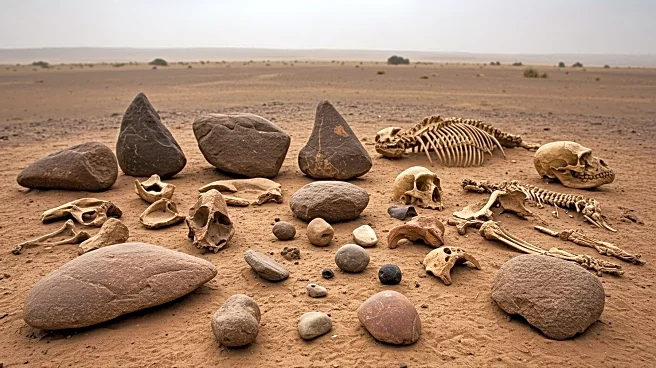Rapid Read • 7 min read
Researchers from the Institut de Paléontologie Humaine have dated a nearly complete cranium from Petralona Cave in Greece to be at least 286,000 years old. This skull, discovered in 1960, has puzzled scientists due to its distinct differences from both Neanderthals and modern humans. Using U-series dating, which measures uranium to thorium ratios, the study provides a minimum age for the fossil, suggesting it belongs to a unique Homo lineage. The findings support the presence of diverse hominin populations in Europe during the later Middle Pleistocene.
AD
The dating of the Petralona skull provides crucial insights into the diversity of hominin species in Europe during the Middle Pleistocene. It challenges existing theories about human evolution by suggesting the coexistence of multiple Homo lineages alongside evolving Neanderthal populations. This discovery could lead to a reevaluation of the evolutionary timeline and the interactions between different hominin groups. It underscores the complexity of human ancestry and the potential for undiscovered lineages.
Future research may focus on further analyzing the Petralona skull and other similar fossils to better understand the distinct characteristics of this Homo lineage. Scientists might explore other sites in Europe to find additional evidence of diverse hominin populations. This could lead to new theories about migration patterns and evolutionary processes during the Middle Pleistocene.
The discovery prompts questions about the cultural and technological capabilities of this distinct Homo lineage. It may lead to discussions about the adaptability and survival strategies of different hominin groups in varying environments.
AD
More Stories You Might Enjoy











